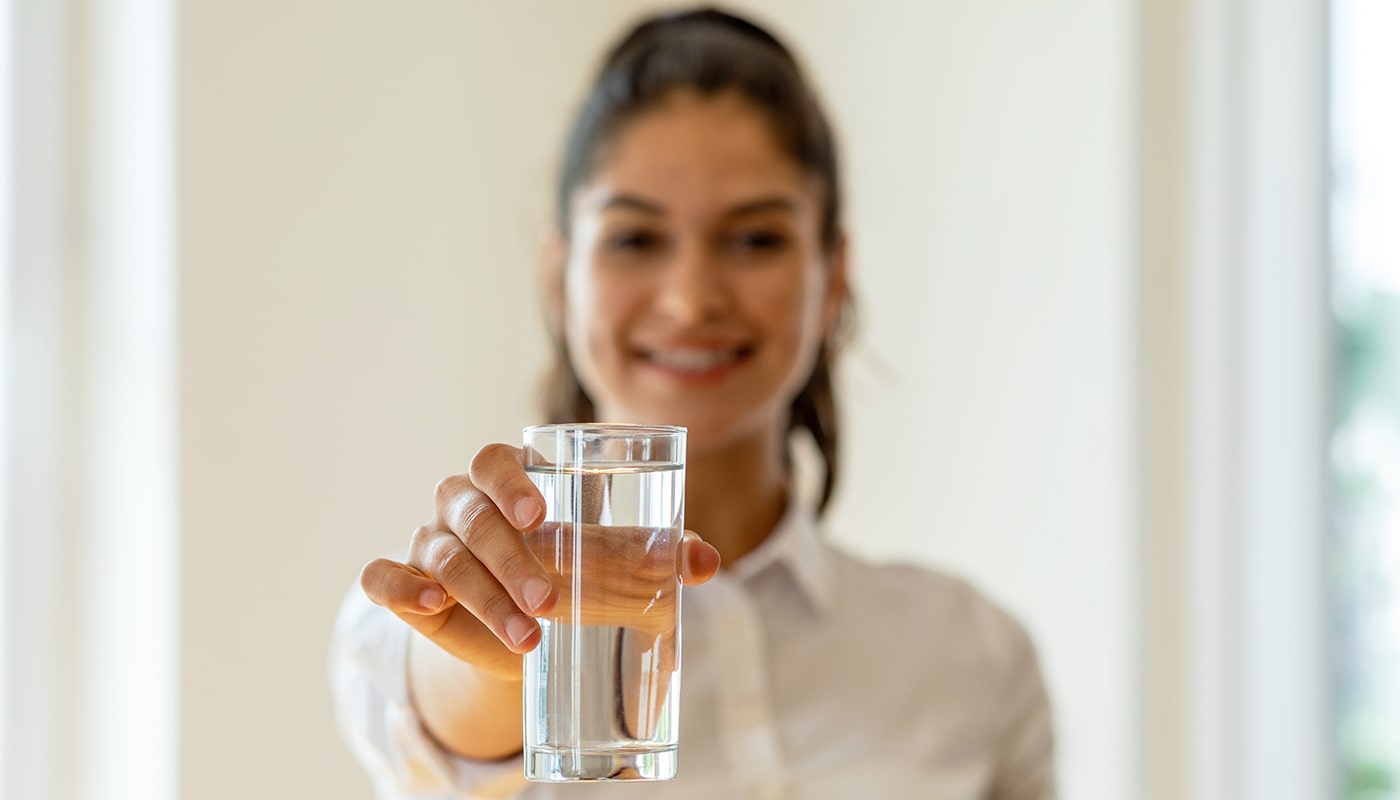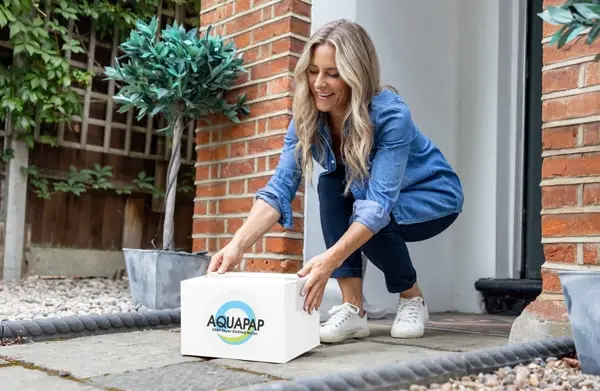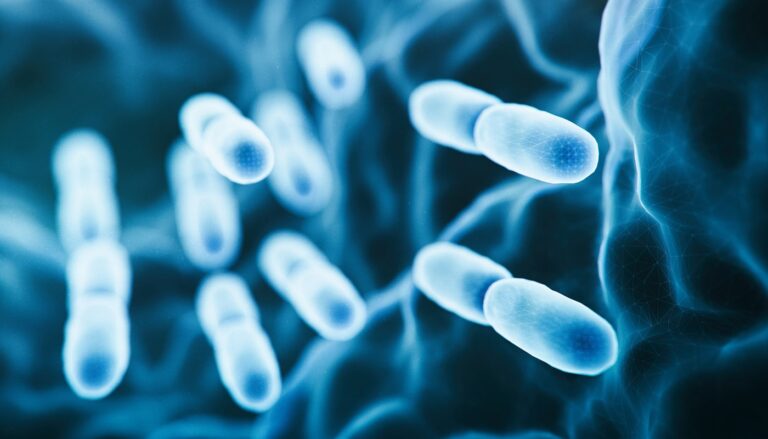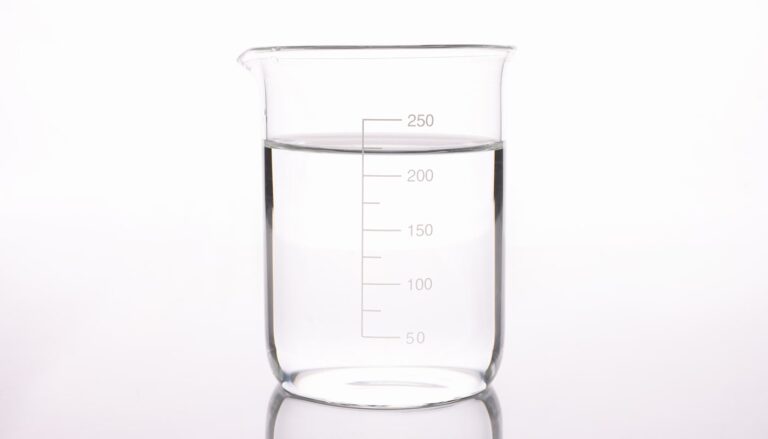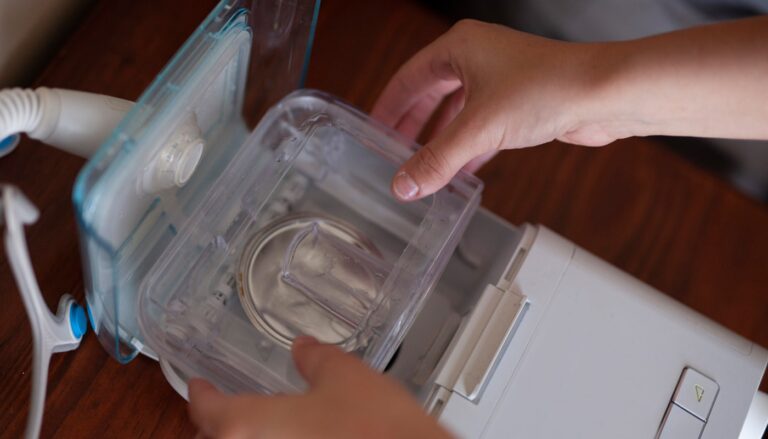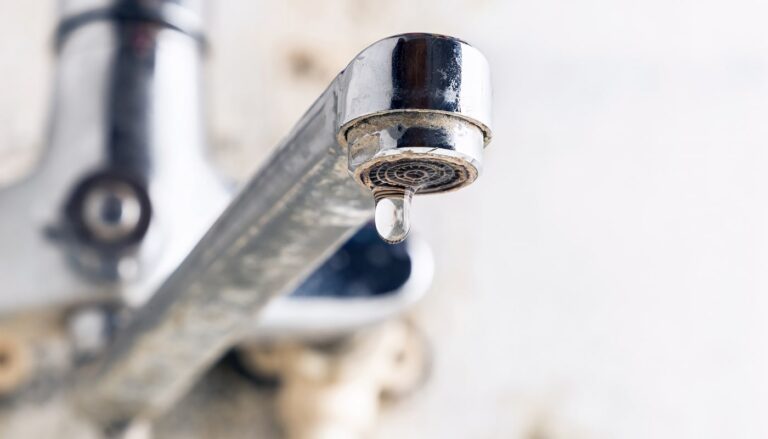Worried About the Acidity of Your Water? Take the Safer Option with the Neutral pH of Distilled Water!
Fortunately for humanity, water is a naturally occurring and abundant substance on our planet. Otherwise, life would not exist. In adult humans, water makes up 60% of the body. Our brain and heart are composed of 73% water and our lungs are 83% water. This makes water quite crucial for healthy processes in our body, and that is why every characteristic of water has an impact: its temperature, salinity, viscosity, pH, contamination, and other factors. But before we can discuss the pH of all kinds of water, especially the pH of distilled water and all its benefits, we need to understand a bit more about water as well as the meaning of pH.
Not too low, not too high. Get the just-right balance in the right size with the neutral pH of vapor distilled water by Aquapap.
What is pH? What is the pH of distilled water? What causes the pH of water to change, and what happens when it does? Why is it so important? There are a lot of questions that need to be answered before we can understand the importance of the neutral pH of distilled water by Aquapap.
What is pH? And what is the pH of distilled water?
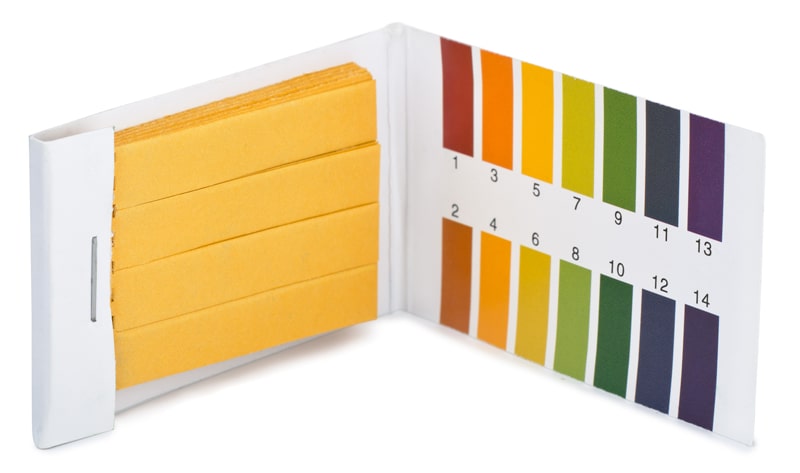
Basically, pH refers to the power or potential of hydrogen in a substance that can be calibrated to specify the acidity or basicity of a solution. Acidic solutions measure less pH than basic or alkaline solutions. In mathematical terms, the pH scale is the negative of the base 10 logarithm of the activity of the H+ ion. This means that the pH scale indicates the concentration of hydrogen ions in the solution.
The pH scale measures from 0 to 14, and at room temperature, solutions with pH less than 7 are acidic, solutions with pH more than 7 are basic, and solutions with pH 7 are neutral, like that of pure water. This means that the pH of distilled water is 7, or neutral. The pH value of a solution is 0 when it is very strongly acid, and it is 14 when it is a very strong base. The pH scale is an internationally agreed upon standard to trace the acidity or basicity of a solution worldwide. Tap water, spring water, and bottled water can all have slightly different pH values depending on the source and the processes that water has been through. Similarly, the pH of distilled water can change depending upon the kind of distillation process that the water has undergone.
How is the pH of a solution determined?
To determine the pH of a solution, the primary values are measured by using a concentration cell with transference. It measures the potential difference between a standard electrode (generally a silver chloride electrode) and a hydrogen electrode. The pH scale is important in medicine, chemistry, water treatment, agronomy, and many other areas of applications. Based on their pH value, there can be three types of water: acidic, alkaline, and pure or neutral. Let’s find out a bit more about these three kinds of water.
Acidic water
Any water with a pH value of 6.5 or less is considered acidic water. Acidic water occurs naturally in rainwater. When it absorbs minerals and dissolved solid materials, the pH of water rises. In the hydrologic cycle, water from sources like lakes, streams, and oceans evaporates. This moist air rises, devoid of all bacteria and minerals that make the water hard, almost like a water filtration system. This water vapor is soft and acidic, and it cools down and condenses as it rises, creating clouds. When it rains, this water falls on the earth, in the form of rain and snow.
Carbon dioxide from the atmosphere dissolves in the precipitation. Carbon dioxide and water form a weak carbonic acid, lending the water a mild acidity. The average pH of rainwater is 5.6. Water can also become dangerously acidic because of chemical runoffs, mine drainage sites, air pollution and other human activities. This is known as acid rain.
When rain hits the earth and seeps through layers of rock and sediment, the pH will adjust depending upon the environmental conditions it encounters. If the rain is falling on calcium-rich limestone, it will absorb high mineral content and likely become hard water. However, if it seeps through a rock bed of something like granite, the water will stay acidic. Metamorphic and igneous rocks lack the calcium to buffer the pH and neutralize the acid in the water. This means many wells are likely to have acidic water, as they are often accessing shallow groundwater. Water from chemical runoffs or mine drainage shafts can also become acidic. The pH levels of a body if water can affect the organisms that live in it or drink from it. Changing pH levels of water bodies can also be an indicator of increasing pollution or some other environmental factors. Acidic water is corrosive in nature.
Alkaline water
Water that has a pH higher than 7 is referred to as alkaline water. But just the pH does not really tell you much about the alkalinity of the water. It also needs to have alkaline minerals and a negative oxidation-reduction potential (ORP) value. ORP is the ability of water to act as a pro- or antioxidant. The more negative the ORP value, the more anti-oxidizing it is. Alkaline water can be either natural or manufactured. When spring water passes over rocks and picks up particles of alkaline minerals, it creates naturally alkaline water. However, most people who are purposely choosing to drink alkaline water based on perceived health benefits are buying the manufactured version.
The most common chemical process that is used to produce alkaline water is electrolysis. In this process, an ionizer uses electricity to separate out the acidic and alkaline molecules of water and then separate out the acidic ones. After this process is done, it is required that the alkaline water be purified or treated to get rid of the contaminants like pathogens and toxins. Consumers today can find alkaline water in any store or make their own alkaline water via ionizers or by adding some lemon juice and baking soda.
Pure water
Normally, water contains a lot of impurities. They can be pathogens, pollutants, heavy metals, or other toxins. Pure water refers to water that has been purified, i.e., it has no impurities. Water can be purified via scientific processes such as distillation, capacitive deionization, electrodeionization, reverse osmosis, carbon filtering, microfiltration, ultrafiltration, or ultraviolet oxidation. Pure water has a pH level of 7, making it neutral. Distillation is an effective purification method, so the pH of distilled water is also 7. Pure water has a lot of uses in the home as well as in the medical and pharmaceutical industries. That is why it is produced in a range of purities and used in the commercial beverage industry as part of the trademarked bottling formula for the sake of maintaining product consistency.
How does the pH of water affect you?
To be able to understand the effects of water’s pH on the human body, it is essential to understand the functions that water performs and the bodily processes that it helps facilitate. In what ways does water impact human health? Once we understand this, it will be easy to understand why any change in the pH of water can cause issues and how the neutral pH of distilled water from Aquapap help protect your health.
1. Temperature and Digestion
Water regulates the human body temperature. Your body loses moisture constantly via sweat, especially in hot conditions or during physical activities, making it more important that you drink extra fluids during these times. While sweat keeps your body cool, if you do not replenish the lost moisture from your body, your temperature can actually start to rise.
Water is the main component of saliva, apart from mucus and enzymes. Saliva helps break down solid food and keep the mouth healthy. Water also helps humans absorb nutrients from their food. It helps break down the food, and absorb the minerals, vitamins, and other nutrients. Therefore, water aids digestion and should be had at all times, before, during, and after meals. For these reasons, water helps with constipation as well as losing weight.
2. Strength and Circulation
Staying hydrated improves the body’s strength, power, and hydration; it helps enhance physical performance. A lack of water combined with heat and physical exercise can have serious negative impacts such as decreased blood pressure, hyperthermia, and life-threatening levels of dehydration. Water also improves the body’s blood-oxygen circulation. This way, water also transports the nutrients absorbed from food to other parts of the body. Drinking sufficient amounts of water every day can help prevent illnesses and medical conditions like constipation, kidney stones, hypertension, exercise-induced asthma, and urinary tract infections. In addition to this, keeping your body’s water content optimum activates your metabolism and boosts your energy. Water also protects your tissues, spinal cord, and joints by providing them lubrication so that you can do more physical activities with less discomfort.
3. Waste Management and Dehydration
Water helps excrete waste from the human body. It does that via multiple processes such as perspiration, urination, and defecation. Adequate amounts of water in the body keep the bowels healthy and help the kidneys perform their best and avoid kidney stones. Finally, a balanced amount of water in your body is important to avoid dehydration. That happens when your body does not receive enough water. Dehydration can be dangerous as so many bodily processes depend upon water. In extreme cases, swelling in the brain, kidney failure, seizures, and even death can occur.
4. Mood, Brain, and Skin
For the human brain to stay sharp, water is essential. Insufficient water can lead to a loss of short-term memory, lack of focus, and inability to maintain alertness. It may also cause mood changes, fatigue, confusion, and anxiety. It is also important to drink enough water to keep your skin healthy since it promotes collagen production. For these reasons, many people start their day with a tall glass of water.
What happens when the pH of your water goes wrong?
As we can see, water is essential for our bodies’ processes. And when its quality changes, so do that of these processes. If your water is acidic or alkaline, it can lead to a number of complications. Let’s look at the impact of overly acidic and overly alkaline water.
Acidic water
Acidic water is extremely harmful to your plumbing. It is corrosive and can leach heavy metals into your water from eroding pipes which exposes your water to high levels of zinc, copper, and lead which have serious negative impacts on health. This leaves blue-green stains around your faucets, indicating real damage to your plumbing. If left unchecked, this can lead to leaking, damage to appliances, and even serious flooding. In our bodies, it can cause nausea, vomiting, diarrhea, and other gastrointestinal issues. Long-term consumption of copper-heavy water can cause serious medical complications such as kidney stones, gallstones, neurological damage, and even kidney and liver failure.
Another extremely dangerous heavy metal is lead. It can cause memory problems, stunted development, seizures, and cognitive impairment in children. In adults, its long-term exposure can result in stillbirths, miscarriages, strokes, high blood pressure, kidney and nervous system diseases, and cancer.
Alkaline water
While many researchers believe that the evidence is scant to prove that alkaline water has any extra health effects over normal water, there are many supporters of alkaline water. There are some studies that suggest that alkaline water might be helpful in some situations, such as helping acid reflux, high blood pressure, diabetes, and high cholesterol, and may improve oxygen transport in the body. Among the list of great things that the supporters of alkaline water believe it to have include anti-aging, detoxifying, and colon-cleansing properties, supports the immune system, hydration and skin health, facilitates weight loss, and increases cancer resistance.
Though alkaline water is not really considered unsafe, it can lead to some negative health effects. The natural stomach acidity in humans helps kill bacteria and other undesirable pathogens from entering the bloodstream. If there is an overconsumption of alkaline water, it may lower stomach acidity levels. Drinking alkaline water excessively can also cause skin irritations, increase the body’s pH level, and lead to gastrointestinal issues. It can also result in metabolic alkalosis, which causes nausea, vomiting, hand tremors, muscle twitching, tingling in the extremities or face, and confusion.
What kind of water are you using?
You would think that at least choosing your water would be easy, but it is not. You may be asked this question at a restaurant or cafe: do you want tap, spring, sparkling or distilled water? And you have to choose. But how to choose? Truthfully, while pH of distilled water or any other kind of water is a factor to take into consideration, there are bigger worries that need to be addressed. To discuss those concerns, we need to dig deeper into some different types of water in a little more detail.
Tap water
Considered a relatively safe source of water, tap water is the most common form of drinking water in the country. But is it safe? Maybe not. The most common contaminants that are found in tap water even after its treatment are aluminum, arsenic, copper, iron, lead, pesticides, herbicides, and uranium. All these contaminants have major side effects that can lead to fatalities in extreme cases. These heavy metals collect in the water when it is traveling through pipes and plumbing in the house and have life-altering effects on kids such as slowed growth, low IQ, and anemia.
Tap water in the US is regulated by the EPA that sets limits on 90+ contaminants in the water supply through the federal Safe Drinking Water Act (SDWA). This policy only applies to public water systems that serve more than 10,000 people. Communities smaller than 10,000 are not regulated under the SDWA. The EPA instead conducts unregulated contamination monitoring once every five years through the UCMR (Unregulated Contaminant Monitoring Rule).
In the recent past, places in the US have faced health crises because of low-quality tap water intake. Most of these places tend to be low-income areas that face challenges born out of infrastructure breakdowns. Big problems have been found in areas like Flint, Michigan, Pittsburg, Pennsylvania, Milwaukee, Wisconsin, and parts of Oklahoma and Texas where lead in the water is causing a major health crisis.
Other major contaminants include pharmaceuticals in the water supplies that enter through the sewage system. This happens mostly when people flush their medications down the toilet. Later on, even when the water is treated and resupplied, trace amounts of these medications are left in the water, the long-term effects of which are still relatively unknown. The processes that are involved in treating water can add to the contamination as well, such as chlorine. While treatment of water removes only 50% of the above-mentioned pharmaceutical trace elements from the water, chlorination ends up producing halogenated disinfection byproducts (DPS), which has been linked to bladder cancer as well reproductive and developmental effects in humans. These contaminants affect the pH levels of the tap water, making it ill-fit for consumption.
A healthier, safer and extremely clean alternative to the problems found in tap water is distilled water. The neutral pH of distilled water is healthy and perfect for human usage as it does not have these impurities and contaminants that can impact its pH and, in turn, the health of your medical equipment. Aquapap’s vapor distilled water comes in several different convenient sizes to fit perfectly into your life.
Spring water
Spring water, raw water, or unprocessed water is the latest fad. But is it good for your health? The belief that spring water that hasn’t been treated and filtered does not contain the contaminants found in tap water or bottled water has been making rounds. Proponents of spring water choose their water based on its mineral content, taste, and mouthfeel. But just because the water does not come from pipes and plumbing doesn’t mean it is free of heavy metals or contaminants. With unproven and unscientific claims, this type of water is becoming a growth market for people to blow their money. The new spring water craze is worrisome because untreated spring water has the potential to be dangerous for your health.
Now, let us get into the intricacies of what spring water is. Where does it come from? Spring water is no miracle; it is simply groundwater that comes out near the ground surface. While it may look pure and clean, there is no guarantee that it is. It’s not possible for people relying on spring water for drinking and cooking to know where the water has traveled and what all microscopic material it has collected before it reaches them.
The human and animal waste of an area combined with the chemical runoffs from industries and communities can reach spring water very easily. Upon collection, there is a multitude of chemicals, bacteria, parasites, and viruses in the spring water that can be very harmful to people. Water-borne pathogens such as Cryptosporidium, Giardia, and E. coli can cause symptoms such as nausea, vomiting, and diarrhea. Heavy chemical contamination can lead to long-term health effects such as kidney and liver damage, nervous system disorders, and birth defects.
Drinking contaminated water can have severe health effects, even life-threatening, for infants, children, the elderly, and individuals with weakened immune systems. Springs are not protected from contamination and are not even routinely checked and tested. The reason behind this paranoia among the public is the belief that treated water is somehow lacking all the important minerals and salts that are good for human health and available in spring water. But spring water is not a solution to that. Out of this list of different types of water, it is spring water where quality is the most questionable.
The promises of spring water are just not worth the risk. In comparison, the pH of distilled water is perfect for human usage, and more than that, it is free of pathogens, contaminants, toxins, and pollutants by its very nature. The neutral pH of distilled water provided by Aquapap is tested, treated, and purified to be free of pathogens and harmful contaminants that we find concerning in tap water. You can even set up a subscription to have your vapor distilled water sent to you automatically.
Purified water
Water that has been filtered or treated to remove pathogens, impurities, and other contaminants like bacteria, fungi, algae, parasites, heavy metals like copper and lead, and chemical pollutants is called purified water. Purified water is generally produced using groundwater or tap water. Water purification removes unpleasant tastes associated with chemical treatments, organic matter, or metal plumbing, leaving you with fresh, pure-tasting drinking water. Most Western countries have purified public drinking water to ensure its safety for human consumption, though the standards of purification differ based on governmental regulations or international standards.
Some of the treatment methods used to purify public drinking water are coagulation and flocculation, filtration, and disinfection. In the US, the legal limit that is safe for consumers covers 90+ contaminants and is set by the Environmental Protection Agency (EPA). But individual states can still regulate the water standards as long as they meet the EPA’s minimum requirements for contaminants, meaning that some states have more strict regulations when it comes to water purification than others.
However, even after purification, there are trace amounts of contaminants harmful for human health that can be found in the water, such as heavy metals like copper and lead, whose long-term exposure is toxic for human health. The level of purification of water is determined by the purification process, and chlorination of the water can sometimes be more harmful than helpful, as studies have linked traces of chlorine to increased risk of certain cancers. Adding fluoride to the public drinking supplies for dental health can be harmful instead as fluoride can be toxic to both brain and nerve cells, with harsher long-term effects. While purified water may be safe for consumption, it still is treated with so many chemicals that it is unfit for usage in medical equipment.
Instead, what you need is the balanced pH of distilled water. It’s lack of chemical or organic contamination is a benefit that tap water, spring water, and purified water cannot give. Vapor distilled water is perfect for drinking, cooking, and use in sensitive medical equipment like CPAP and BiPAP.
Distilled water
The distillation of water is the process of cooling boiled water and then converting it back to a liquid form. Regardless of the source, natural, well, or tap has trace amounts of heavy metals, pathogens, pesticides, and other contaminants. In contrast, distillation removes these impurities, including dissolved minerals. While tap water is filtered and treated with fluoride, distilled water is not. Most bottled water is filtered in some manner. Distilled water has a very flat taste as it is devoid of impurities as well as minerals like calcium, sodium, and magnesium that give tap water its familiar flavor. We will get into more detail about different types of distillation processes and why the neutral pH of distilled water from Aquapap is the best choice, especially for household usage and medical requirements.
What kind of water should you use? The answer is in the pH of distilled water.
There are different kinds of distillation that lead to different levels of purity. To know which kind of distillation is best is to know which distillation process provides the required levels of purity and neutral pH of distilled water. For that, we need to understand how the pH of distilled water varies based on the different kinds of distillation processes.
Simple distillation
Most of the laboratory-level distillations are run as batch distillations. The apparatus used for simple distillation consists of a reboiler in which the source material is heated, a condenser in which the hot vapor is cooled back into a liquid state, and a receiver in which the purified liquid, called the distillate, is collected. All kinds of distillation techniques use this base apparatus to purify water. For simple distillation, a similar approach is used. But since the internal pressure of a sealed distillation device can vary rapidly, putting it at risk of bursting, a small path is left to allow the internal pressure to equalize with atmospheric pressure. To prevent the entry of undesired air, a low but steady flow of a suitable inert gas like nitrogen is pumped into the apparatus. In simple distillation, the heated vapor is immediately directed into the condenser. This means that, in accordance with Raoult’s law, the composition of the vapors is identical to that of the composition of the liquid at the given temperature and pressure.
Vacuum distilled water
There are compounds that have a very high boiling point, and therefore, it is better if such compounds are boiled at lower pressures rather than increasing temperatures. For a given temperature, when the pressure is lowered to the vapor pressure of the compound being distilled, the process of boiling and distillation can begin. This technique of purifying water is referred to as vacuum distillation.
In laboratory arrangements, it is found in the form of a rotary evaporator. The vacuum distillation process is especially necessary for purifying compounds that boil beyond their decomposition temperature at atmospheric pressure. This will cause them to decompose if any attempt to boil them is made under atmospheric pressure. Vacuum distillation is used to distill liquids that have different boiling points. In case of close boiling, or bursting, mixtures that require equilibrium stages to separate key components can only be distilled via vacuum distillation. The main usage of this technique is in oil refineries.
Vapor distilled water
Vapor distillation is a process that is used to purify water using a specialized heating process that removes any extra molecules and particles that are present. The resulting water from vapor distillation is the cleanest form of water that can be created in a laboratory, and this is why Aquapap water is purified using vapor distillation.
Vapor distilled water does not occur naturally. The process of vapor or steam distillation is generally used in separating volatile and non-volatile substances that are mixed together. Vapor distillation of water or hydrodistillation begins by mixing water with the starting material in a boiling vessel. A metal mesh or perforated screen supports the material above the boiling water in a direct steam distillation flask. A separate container is used to force steam from a boiler to pass through the starting material. It is also possible to heat steam above the boiling point of water so that it becomes superheated steam, allowing for more efficient extraction.
During vapor distillation, steam from boiling water is compressed, which heats it further to a superheated status and made to travel back into the chamber where it was originally boiled. There it condenses on the now-cooled surface. Vapor distilled water is heavily used in scientific and culinary areas because of its high levels of purity. This ensures that there will be no particles in the water that could either alter a scientific test’s result or change the taste of a dish.
Get the safety of neutrality with the pH of distilled water in Aquapap vapor distilled water
So there are different reasons why water is important, different kinds of water, different kinds of purification and distillation processes. How to choose which one is best? Which distillation process guarantees you the neutral pH of distilled water? If you were to look for brands that promote the purity of their water, you will find more than your mind can comprehend.
What is the difference that the water from Aquapap will make in your life? Many. And, the natural pH of distilled water that it offers is just one of them. As we read above, there are a lot of people claiming a lot of things. Fluoride is good for teeth, spring water is the major health enhancement of the time, and simple boiling can fix it all. No. None of them can do what Aquapap’s vapor distilled water can do and deliver you the level 7 pH of distilled water. Here is what you can expect when you use water from Aquapap.
Safety
It’s not all about convenience for convenience’s sake, if the convenience itself means safety, right? When it comes to people who are medically vulnerable and dependent on others for their care, like children and the elderly, convenience can be life-changing. But before convenience, what Aquapap achieves is safety through effective vapor distillation. We go to great lengths to ensure that the water you get is absolutely safe and pure and can be used without hesitation or worry. You can confidently use Aquapap water in your CPAP machines and other sensitive medical equipment. You do not have to stress about heavy metals and chemical runoffs when washing your vegetables with Aquapap or using it for cooking, especially for the elderly and babies.
Because of Aquapap’s single-serving bottles, you can also be assured that your water isn’t developing bacteria after opening due to exposure to air. Those gallon-size jugs of water at the grocery store can’t make that same claim, since it often takes a number of days to use the whole gallon. After just 48 hours that formerly pure distilled water can be growing bacteria or be otherwise become contaminated by airborne pathogens. Aquapap vapor distilled water avoids this issue entirely by being packaged in sizes designed be used in one or two days.
Convenience
You need water anytime and all the time. If you are someone who uses distilled water for medical purposes like CPAP machines and other medical devices, then you do not want to take the chance that you might not have your water when you need it. If you use tap water in your medical appliances, including CPAP and BiPAP machines, it can lead to mineral deposits and damage to the machine, as well as your risk of exposure to whatever contaminants are in your water supply. But how much water to buy at once? Carry gallons of it? That is not practical. What is practical is home delivery in right-sized bottles.
With Aquapap, you get the perfect pH of distilled water with no impurities or contamination delivered right to your doorstep. Traveling? You can even make that doorstep your hotel. To make sure you never run out of your vapor distilled water, we offer a subscription service as well. You’ll get your water in the right amount at the right time without having to remember to re-order. And you can change your subscription whenever you want. This is especially important during the current distilled water shortage.
Aquapap can deliver your water even if you are traveling by sea. You can have your order delivered to your ship before it departs in the perfect amount, based on the length of your trip and how much water you use per day. This means you don’t have to stress about carrying jugs of water through the airport or running out of your water during your vacation. Aquapap can follow you pretty much anywhere and save you from the hassle of lugging all your water around or worse, using potentially contaminated water if you run short.
Aquapap water comes in convenient case sizes for different needs, including a travel kit. You can choose from 8oz, 12oz or 16.9oz sizes. All the bottles can be ordered in 7-pack, 8-pack, 10 pack, 12 pack, or 24 pack cases.
The safety and perfect pH of distilled water has been revealed. What next?
Now that you’ve done a deep dive into the perfect 7 pH of distilled water and why it matters, the next step is to get that safety and neutrality of vapor distilled water at home. Check out our shop and find the right size bottles for your needs. Be sure to take a look at our convenient subscription programs to save time and money.
Still have questions? We are here to help you with any additional queries that you might have, and provide support and guidance Just reach out to us and you’ll find that our service is as high quality as our water.
